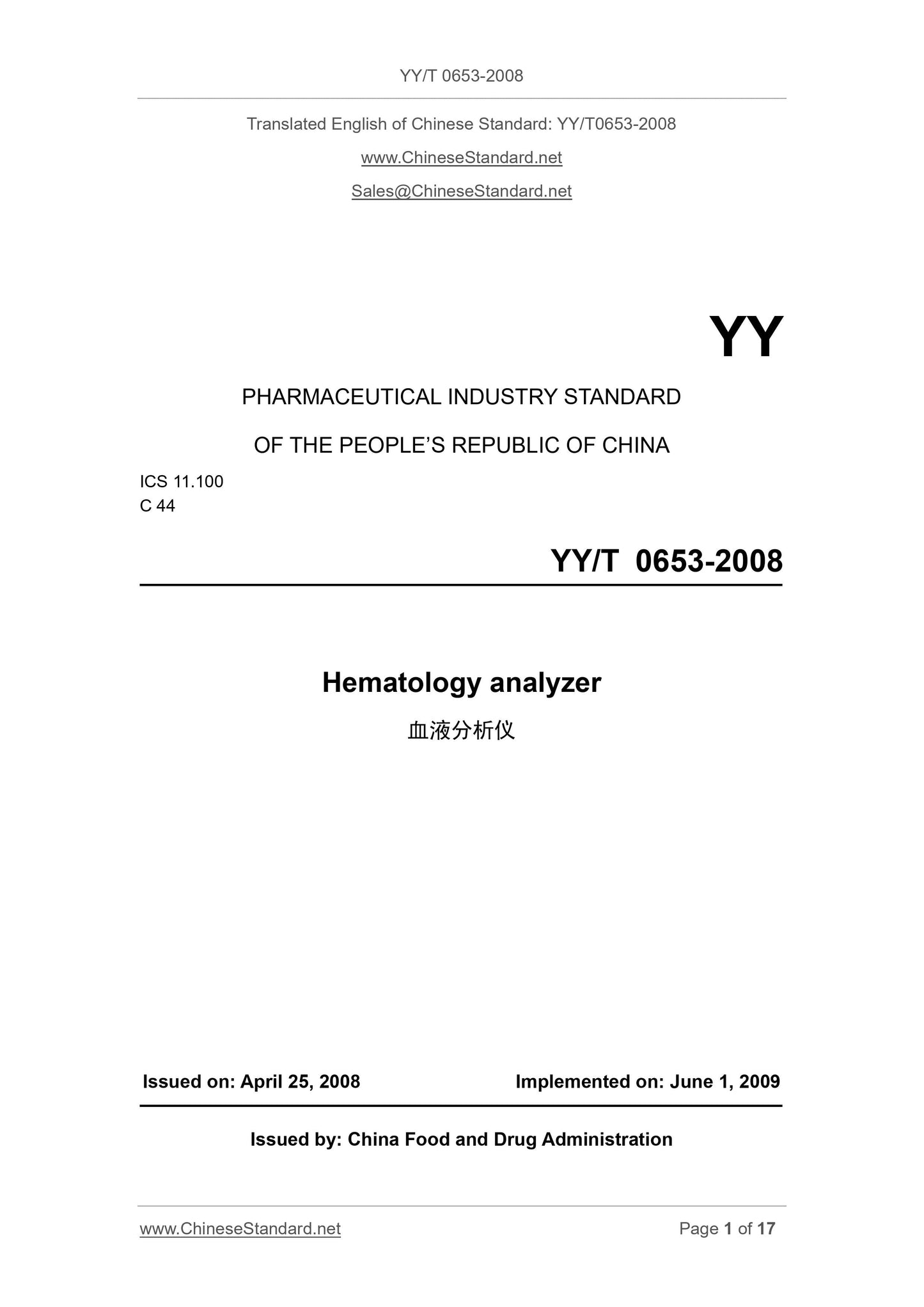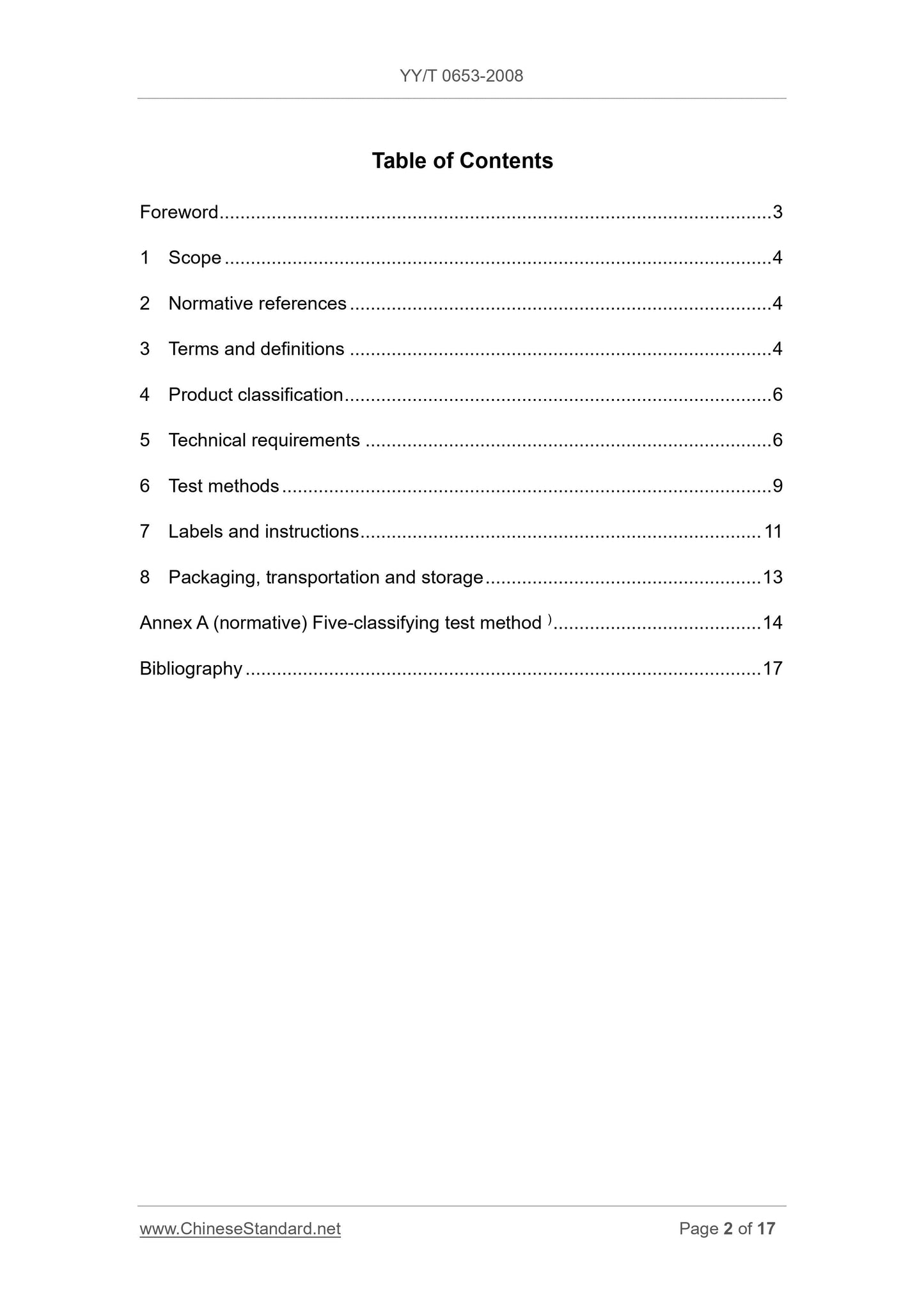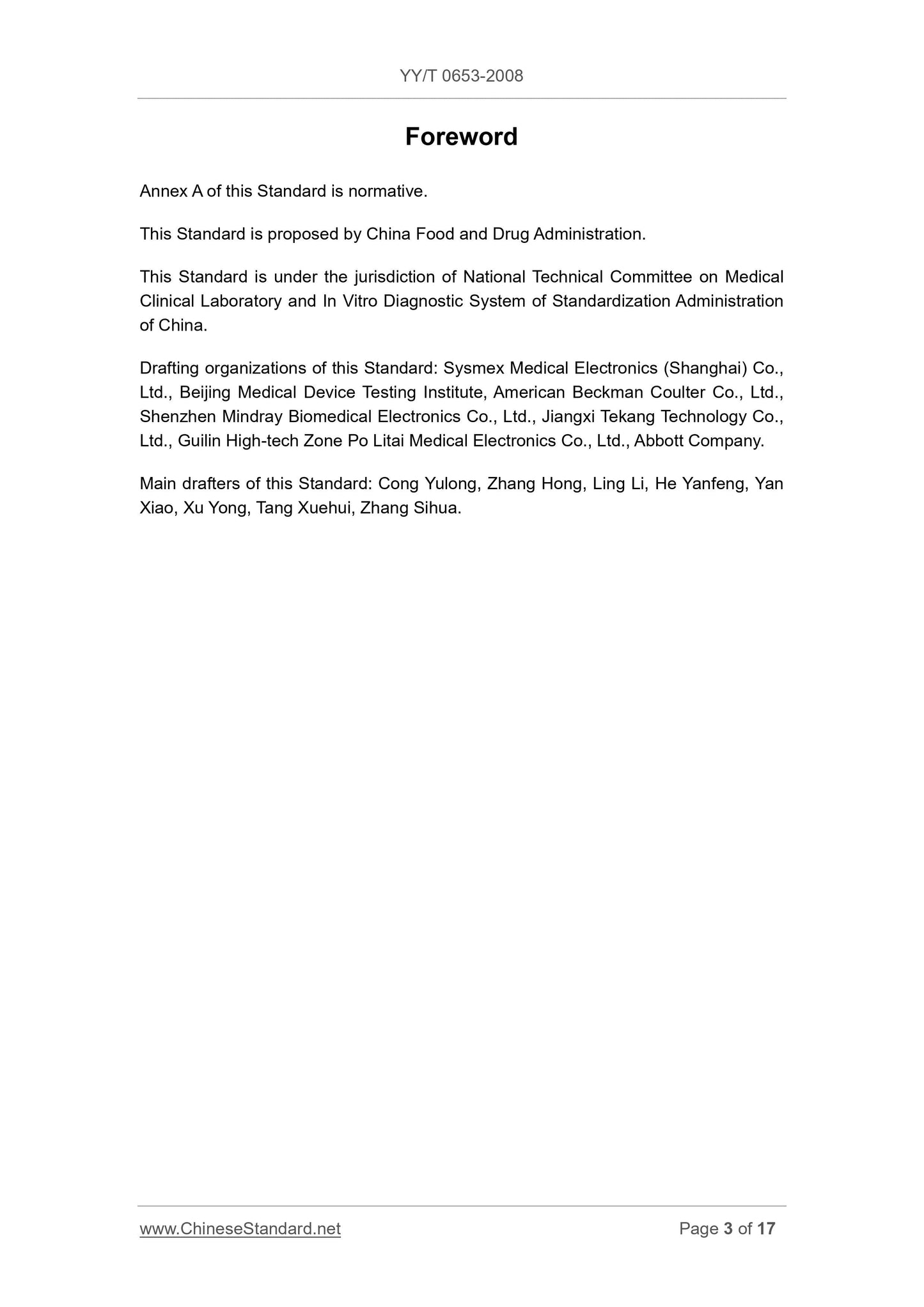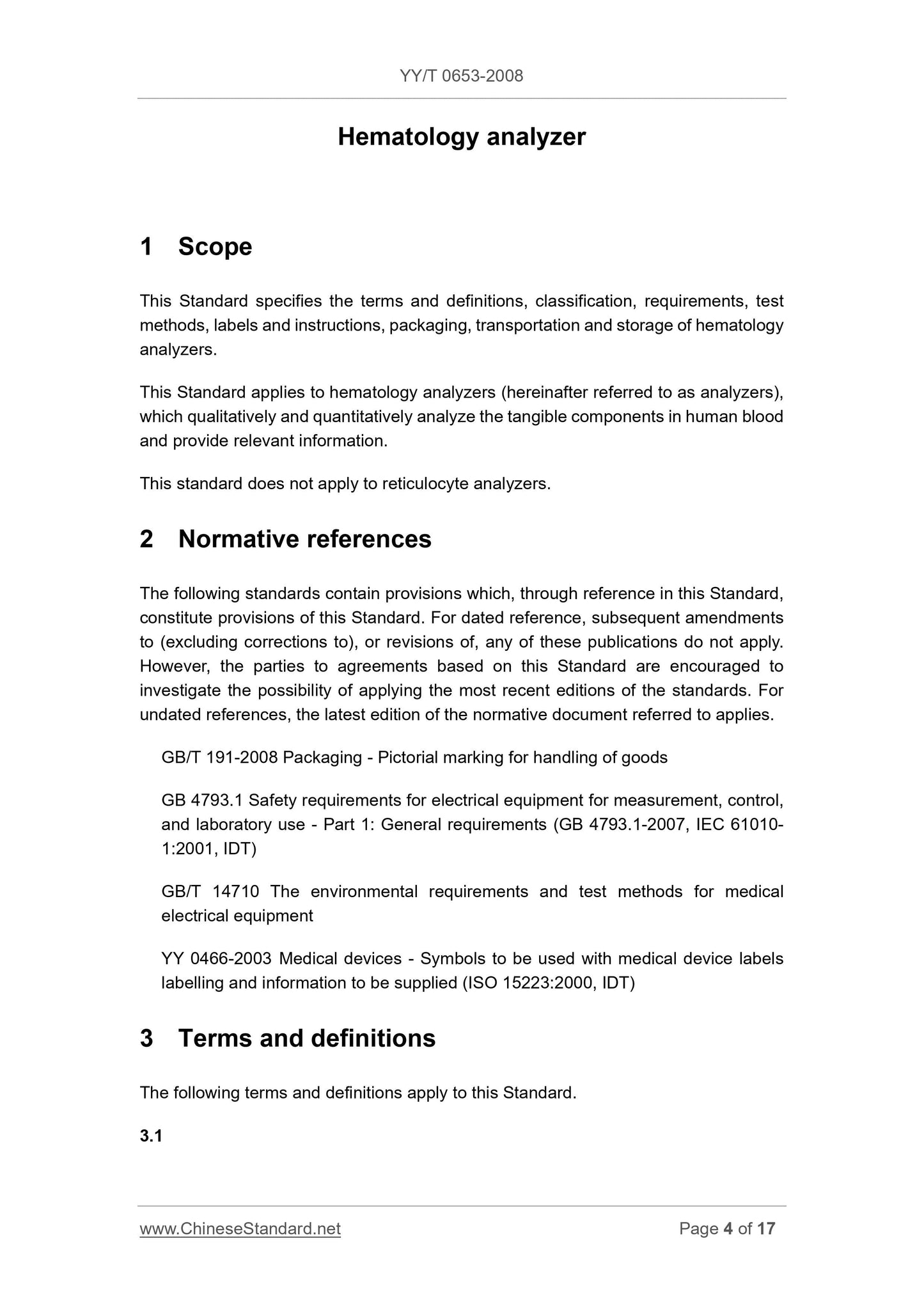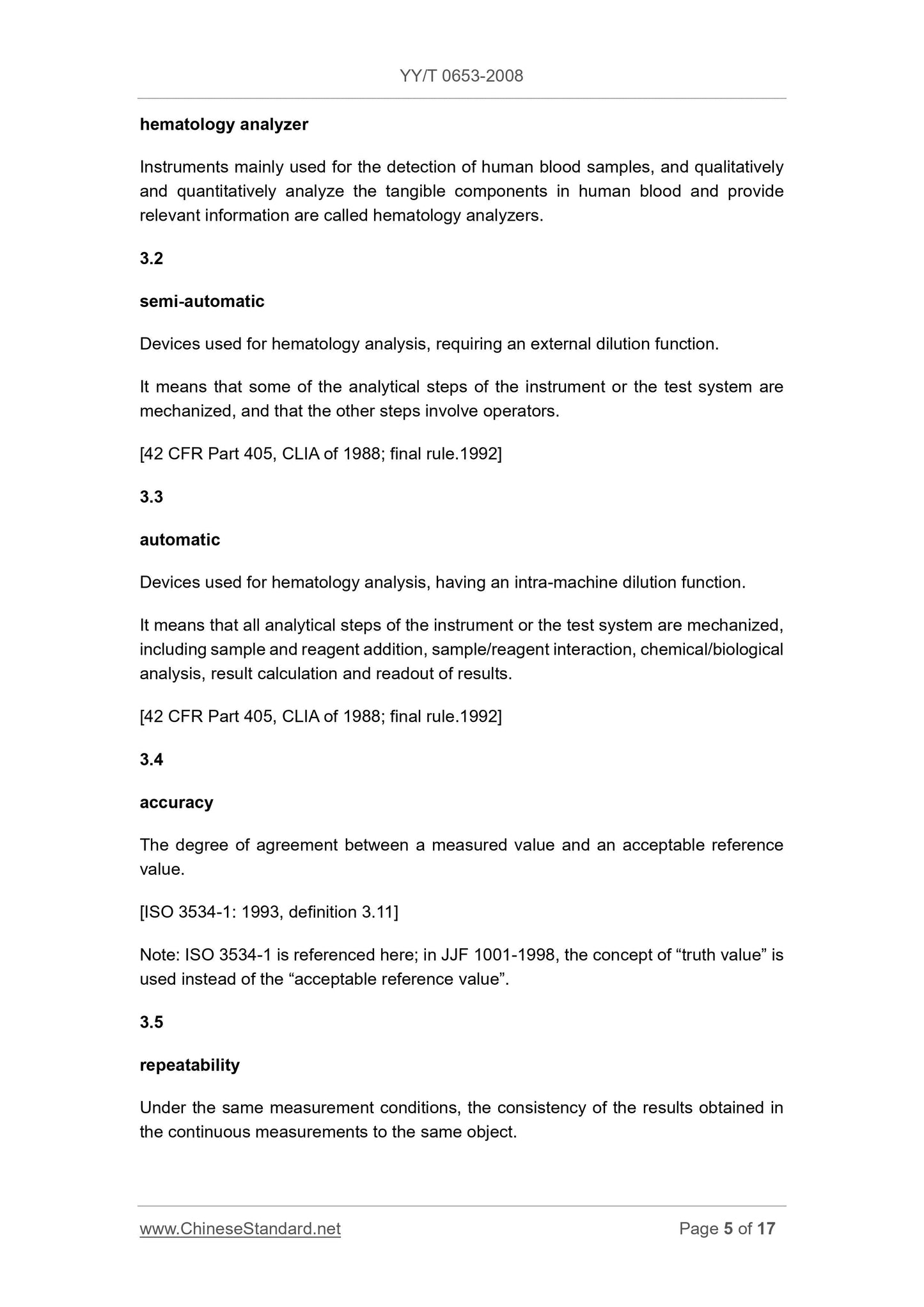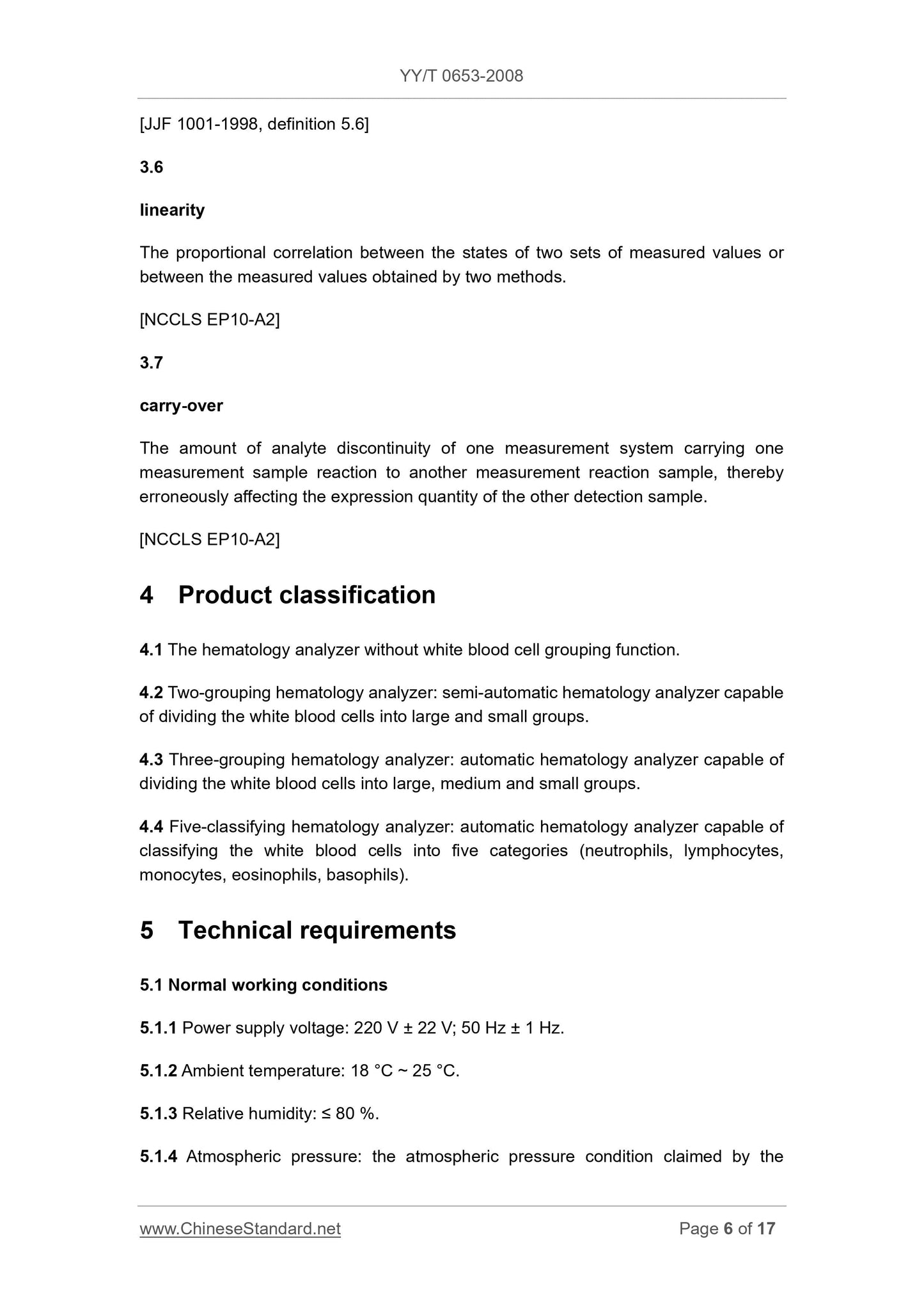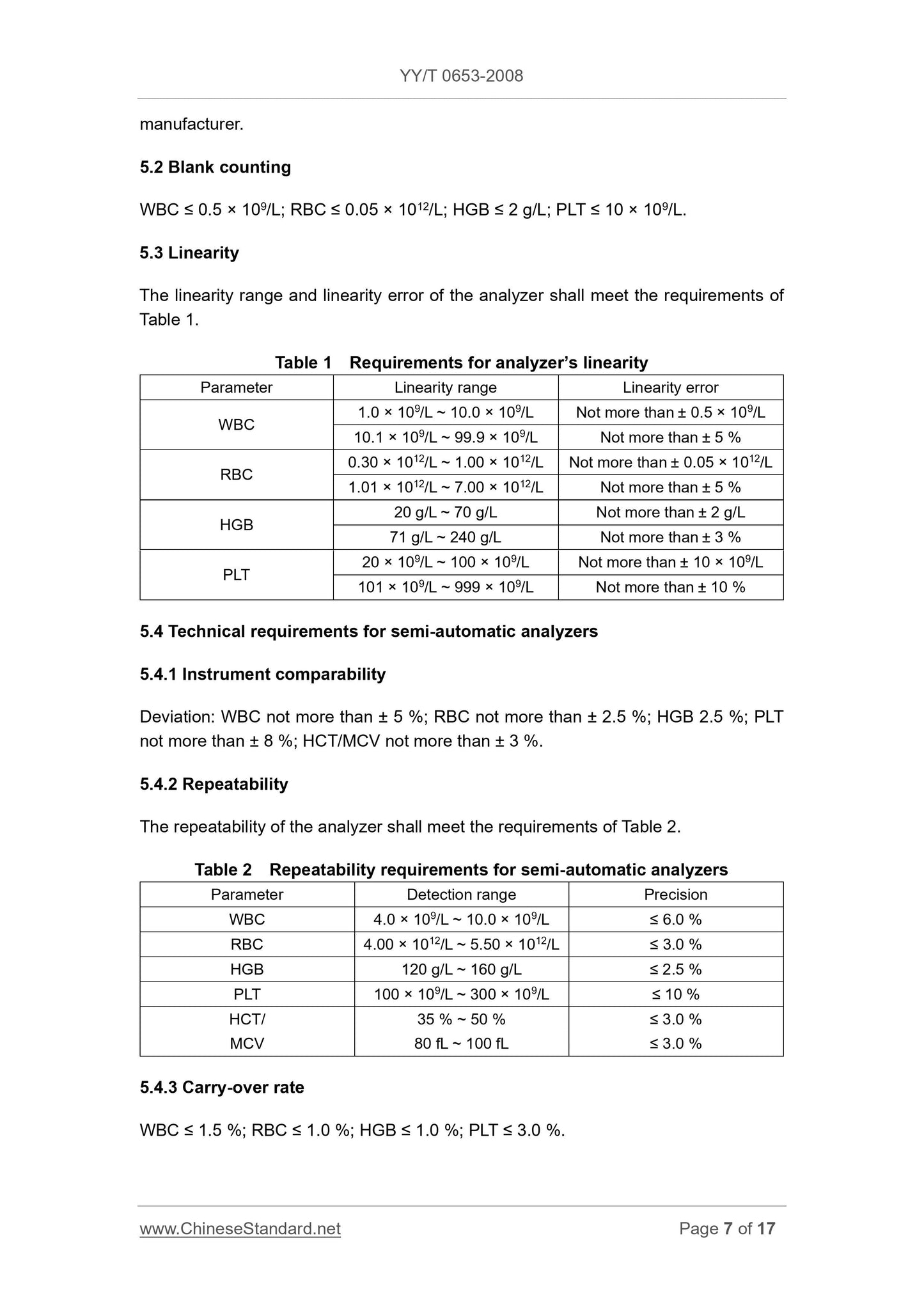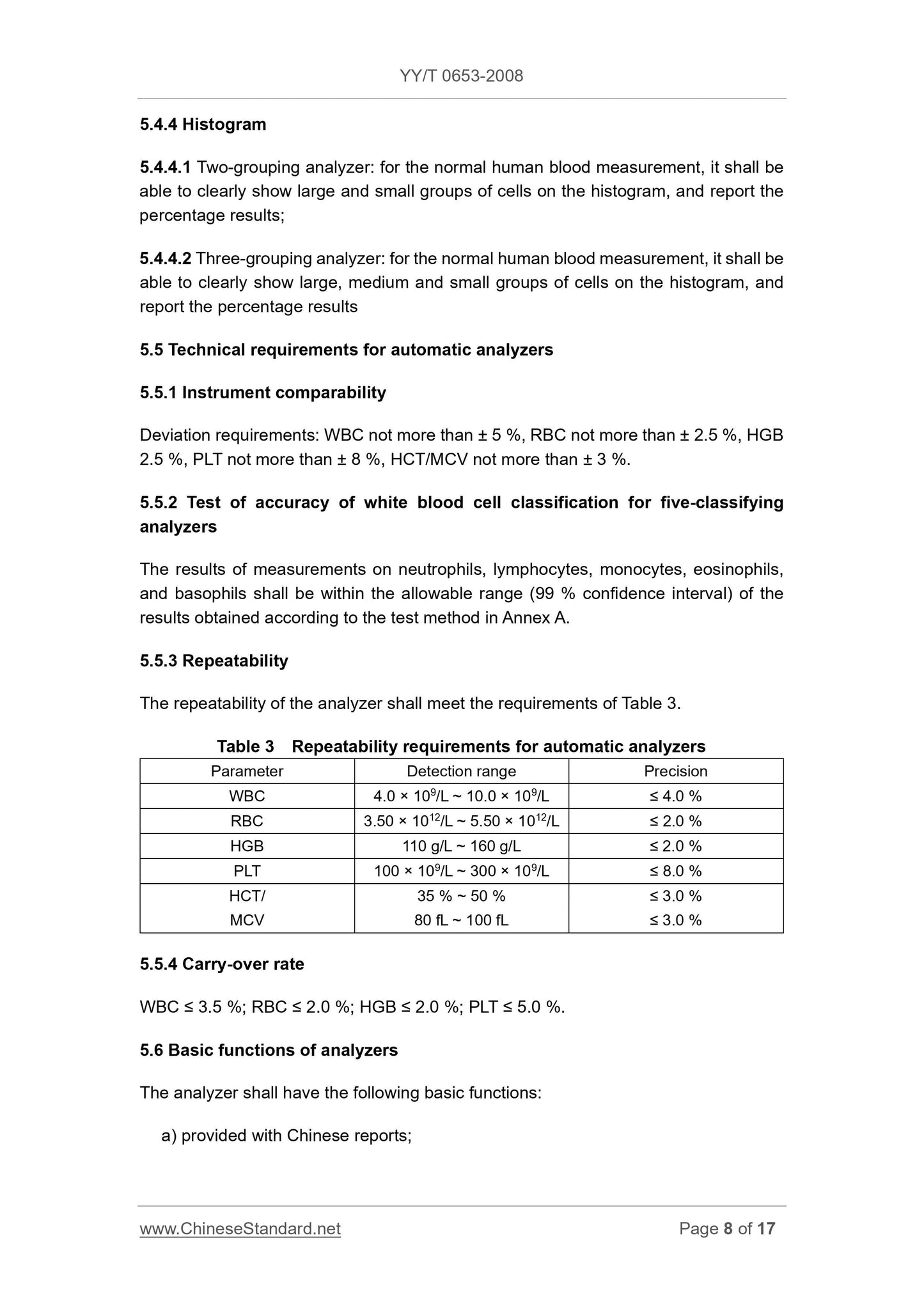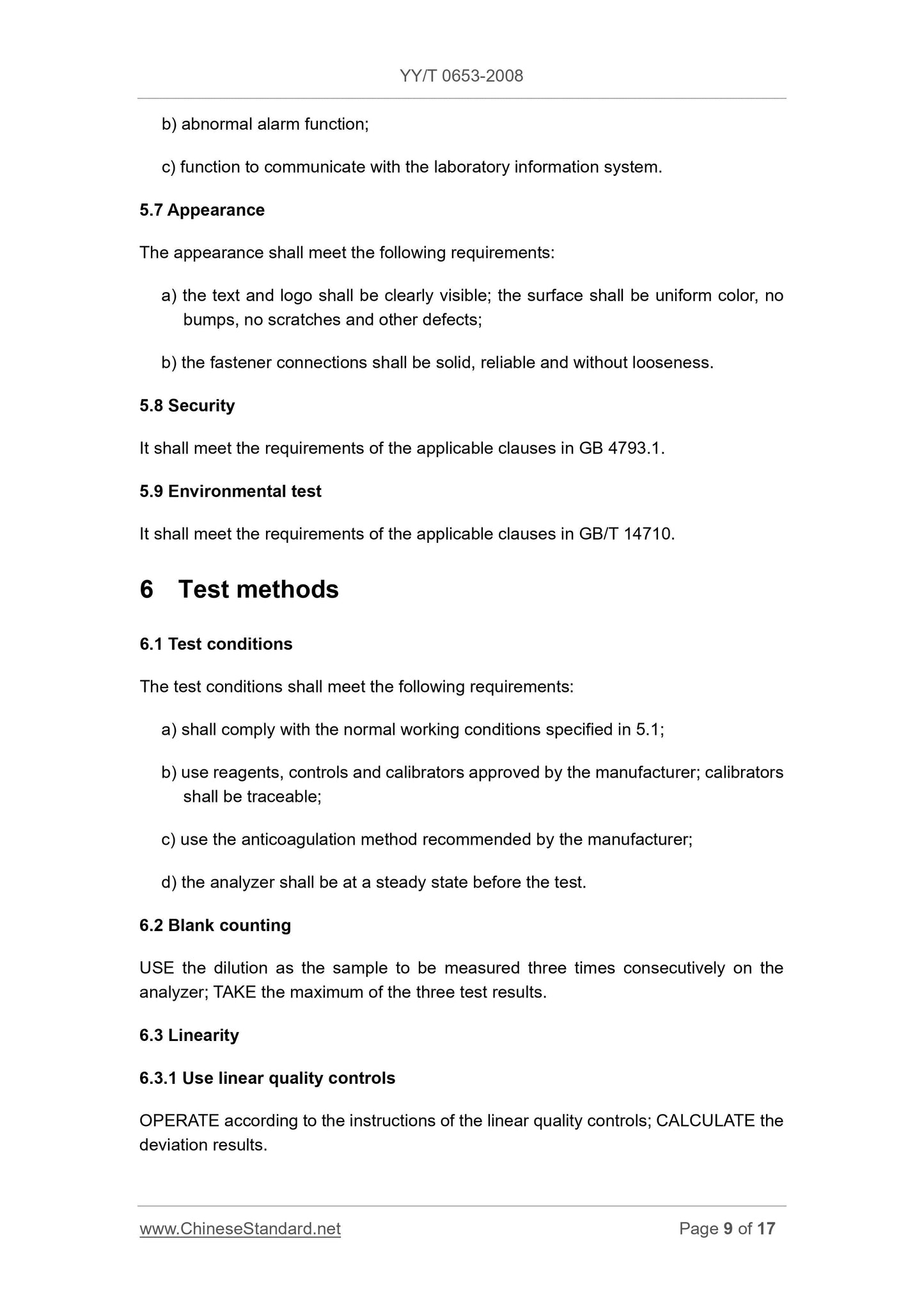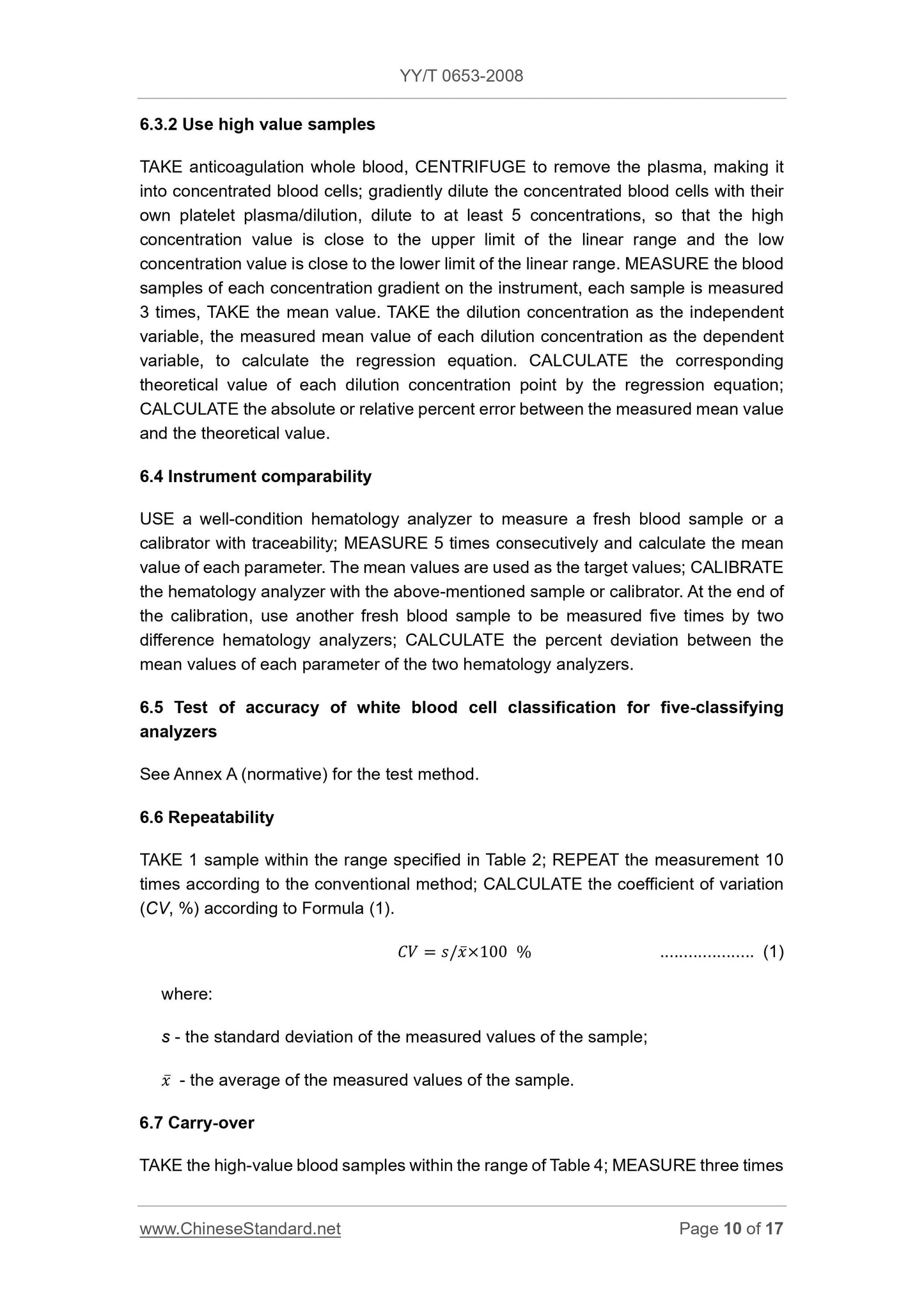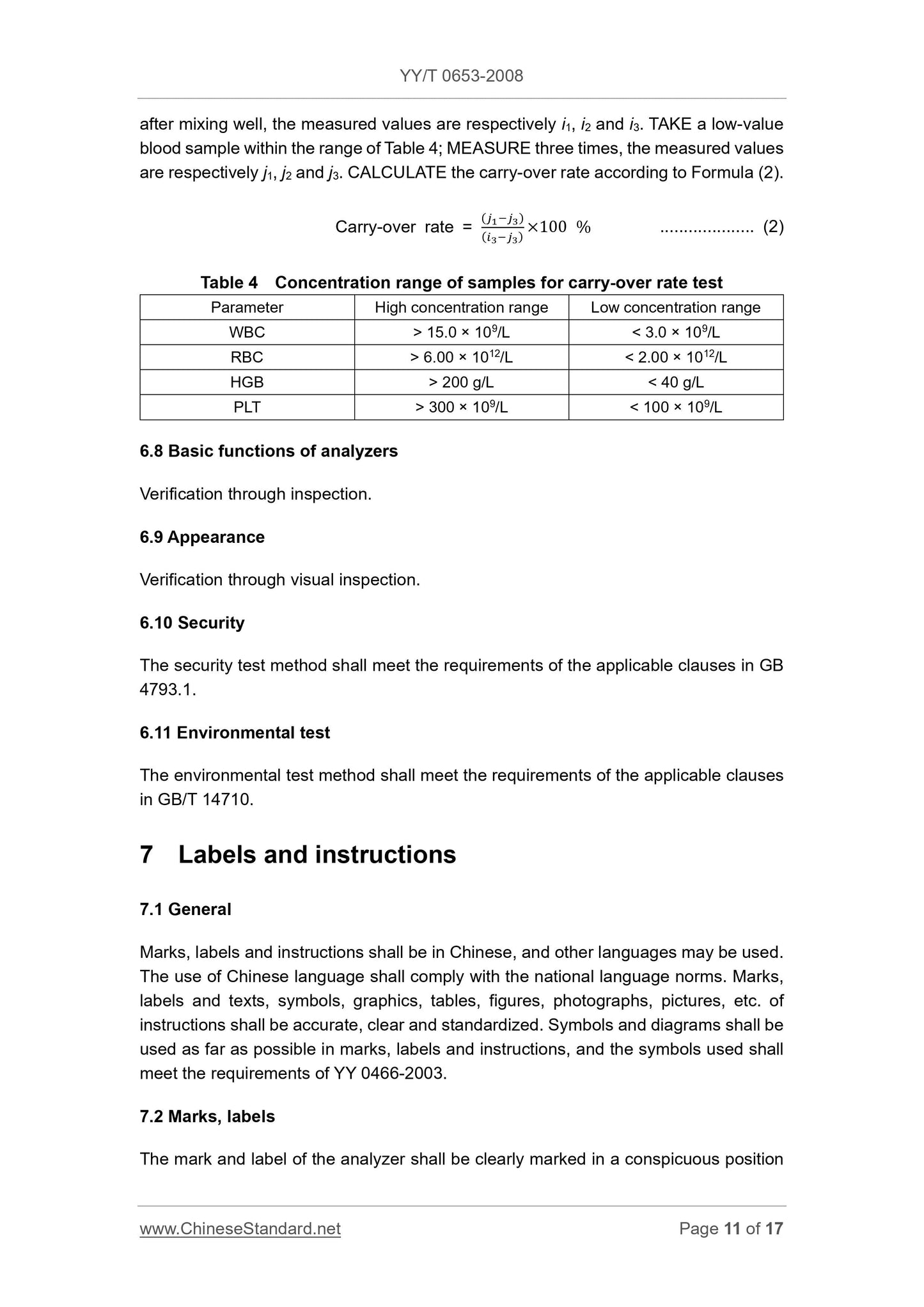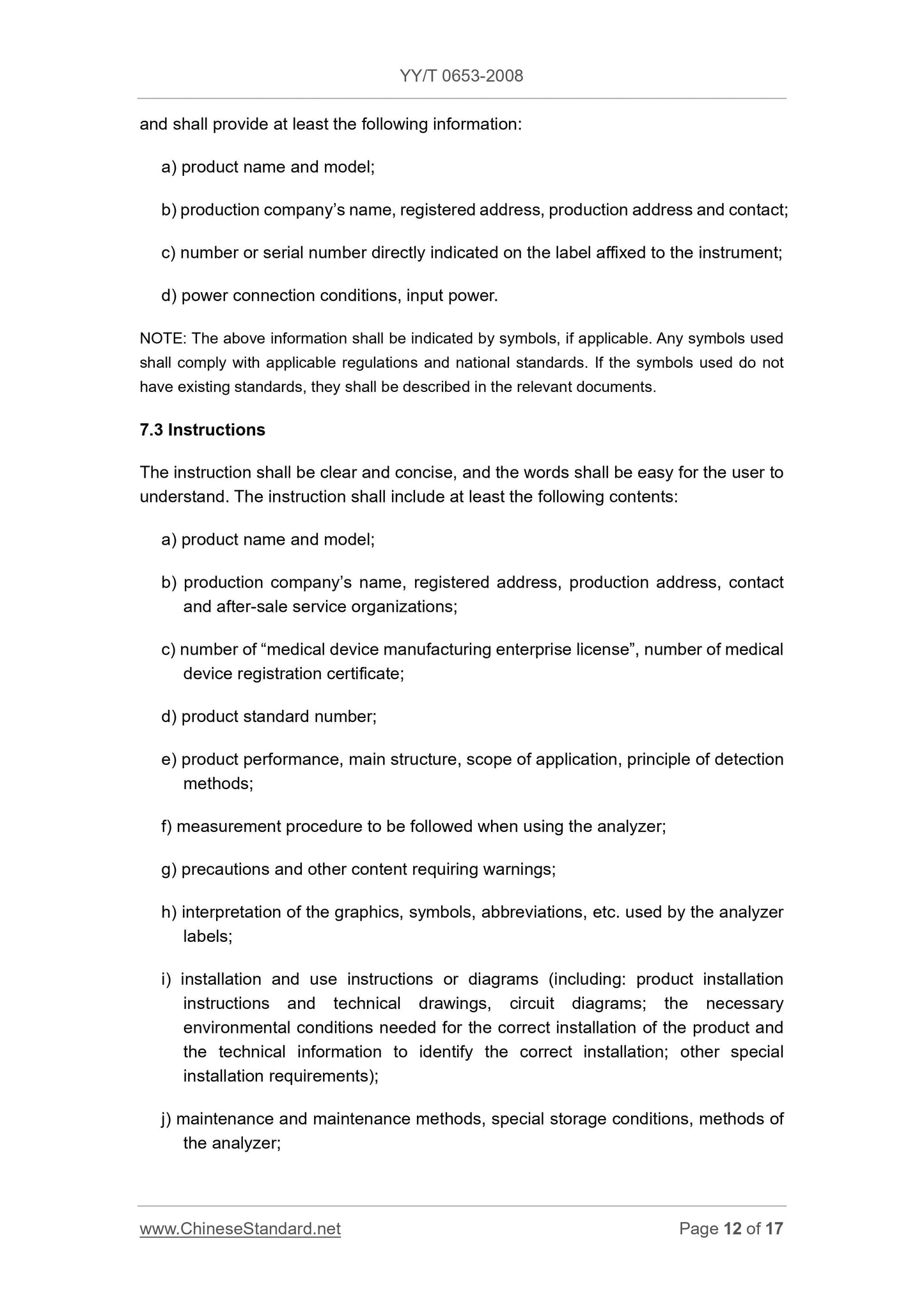1
/
of
12
PayPal, credit cards. Download editable-PDF & invoice in 1 second!
YY/T 0653-2008 English PDF (YY/T0653-2008)
YY/T 0653-2008 English PDF (YY/T0653-2008)
Regular price
$180.00
Regular price
Sale price
$180.00
Unit price
/
per
Shipping calculated at checkout.
Couldn't load pickup availability
YY/T 0653-2008: Hematology analyzer
Delivery: 9 seconds. Download (and Email) true-PDF + Invoice.Get Quotation: Click YY/T 0653-2008 (Self-service in 1-minute)
Newer / historical versions: YY/T 0653-2008
Preview True-PDF
Scope
This Standard specifies the terms and definitions, classification, requirements, testmethods, labels and instructions, packaging, transportation and storage of hematology
analyzers.
This Standard applies to hematology analyzers (hereinafter referred to as analyzers),
which qualitatively and quantitatively analyze the tangible components in human blood
and provide relevant information.
This standard does not apply to reticulocyte analyzers.
Basic Data
| Standard ID | YY/T 0653-2008 (YY/T0653-2008) |
| Description (Translated English) | Hematology analyzer |
| Sector / Industry | Medical Device and Pharmaceutical Industry Standard (Recommended) |
| Classification of Chinese Standard | C44 |
| Classification of International Standard | 11.100 |
| Word Count Estimation | 12,172 |
| Date of Issue | 2008-04-25 |
| Date of Implementation | 2009-06-01 |
| Quoted Standard | GB/T 191-2008; GB 4793.1; GB/T 14710; YY 0466-2003 |
| Regulation (derived from) | SFDA [2008] No. 192 |
| Issuing agency(ies) | State Food and Drug Administration |
| Summary | This standard specifies the hematology analyzer terms and definitions, classification, requirements, test methods, labeling and instructions for use, packaging, transportation and storage. This standard applies to visible components of human blood for qualitative and quantitative analysis, and provide relevant information hematology analyzer (hereinafter referred to as the analyzer). This standard does not apply to the reticulocyte analyzer. |
Share
